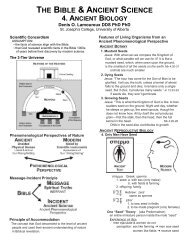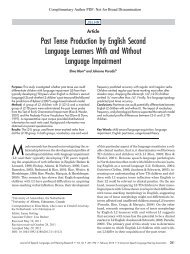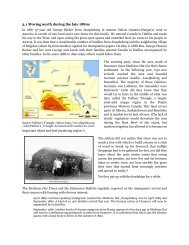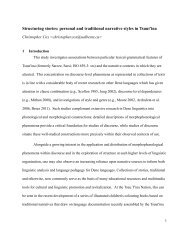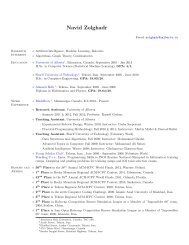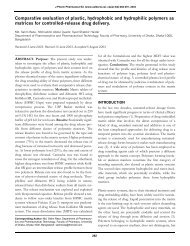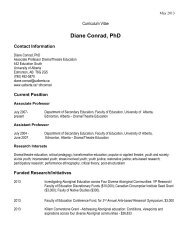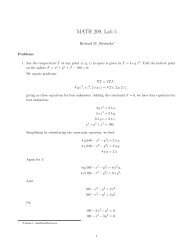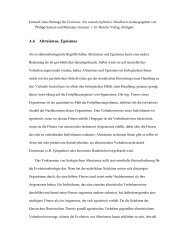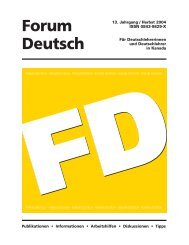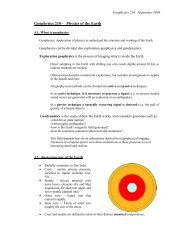The early theoretical development of Konrad Lorenz - University of ...
The early theoretical development of Konrad Lorenz - University of ...
The early theoretical development of Konrad Lorenz - University of ...
You also want an ePaper? Increase the reach of your titles
YUMPU automatically turns print PDFs into web optimized ePapers that Google loves.
THE EARLY THEORETICAL DEVELOPMENT OF KONRAD LORENZ 18<br />
<strong>The</strong> following remark by <strong>Lorenz</strong> nicely illustrates how he used the framework <strong>of</strong><br />
<strong>development</strong>al mechanics to think about the <strong>development</strong> <strong>of</strong> behavior. Koehler (1933) is an<br />
article dealing with the idea <strong>of</strong> wholeness in biology. At one point Koehler describes an<br />
instance <strong>of</strong> embryological induction by means <strong>of</strong> a dead organizer, i.e., non-living matter<br />
derived from animal tissue (p. 182). <strong>Lorenz</strong> annotates on the margin <strong>of</strong> his reprint <strong>of</strong> Koehler<br />
(1933) “Prägung!” (Imprinting!). It is intriguing that this margin note is about a dead<br />
organizer, because a bird can be imprinted not just to other animals, but to inanimate objects<br />
as well. In sum, even though <strong>Lorenz</strong> was not primarily interested in the <strong>development</strong> <strong>of</strong><br />
behavior and did not have a coherent theory <strong>of</strong> the ontogeny <strong>of</strong> behavioral features, in order to<br />
defend his views <strong>of</strong> instincts <strong>Lorenz</strong> thought along the lines <strong>of</strong> a kind <strong>of</strong> behavioral<br />
embryogenesis, using ideas from <strong>development</strong>al mechanics.<br />
<strong>Lorenz</strong> on instinct and innateness<br />
<strong>The</strong> four factors <strong>of</strong> <strong>Lorenz</strong>’s perspective are constant features <strong>of</strong> his approach. Taken together,<br />
these factors guided and constrained his <strong>early</strong> <strong>theoretical</strong> <strong>development</strong>. This holds in<br />
particular for the formation <strong>of</strong> <strong>Lorenz</strong>’s instinct concept and his innate-learned dichotomy, so<br />
that these features that were so characteristic about <strong>Lorenz</strong>’s <strong>theoretical</strong> position and that<br />
distinguished him from other animal psychologists can be understood based on the four<br />
factors. 12<br />
<strong>The</strong> taxonomic-phylogenetic approach is particularly important for <strong>Lorenz</strong>’s<br />
12 My account can only show why <strong>Lorenz</strong> was more likely to have his peculiar views on instinct and<br />
innateness than another theory. In contrast, Kalikow (1975) is too bold when she claims that the concept <strong>of</strong><br />
innate releasing mechanism “could not have been invented without an over-all optic such as that provided by the<br />
chain-reflex theory” (p. 334). McDougall (1933), for instance, talks about organisms being “endowed by nature<br />
with a lock”, to be unlocked by “a key”, i.e., “a specific object that evokes an instinctive response” (pp. 98–99).<br />
So McDougall’s work contains an idea that has some <strong>of</strong> the main features <strong>of</strong> the innate releasing mechanism



